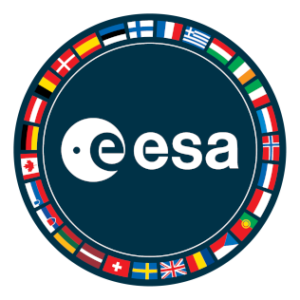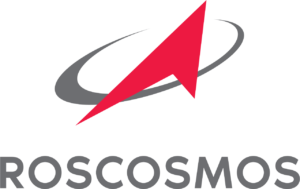The exploration of space has been a timeless source of fascination for generations. From the initial, cautious forays into the unknown to the audacious schemes for forthcoming extraterrestrial colonization, space agencies worldwide have unfailingly led the way in our cosmic odyssey. In this article, we will embark on a cosmic journey of our own, delving into the Top 10 space agencies in the world. Along the way, we’ll celebrate their remarkable achievements, spotlight their ongoing missions, and underscore their vital role in the pursuit of scientific knowledge and interstellar expansion.
TOP 10 BEST SPACE AGENCIES IN THE WORLD
As there are more than 70 Countries those have their Space Agencies, but we can’t cover all of them in a single article, so we researched and find out the Top Ten best Space Agencies in the World.
10. (ASI) Italian Space Agency – Italy

The Space Agency, established in 1988, has its headquarters located in Rome. It has steadily risen to prominence, now ranking among the top 10 space agencies globally. Over the years, this agency has engaged in numerous collaborative ventures with other space agencies, contributing significantly to missions such as Mars Express, Venus Express, Mars Reconnaissance Orbiter, Juno, Cassini-Huygens, and XMM-Newton.
With an annual budget of $2.1 billion, this Space Agency demonstrates its unwavering commitment to pushing the boundaries of space exploration. In a notable milestone, it launched its very first satellite, BeppoSAX, in 1996, marking a significant achievement in its history.
Presently, the Italian Space Agency is actively involved in the Arian 5 project, a joint initiative with the European Space Agency (ESA), further solidifying its position in the realm of space exploration.
9. (DLR) German Aerospace Center – Germany

The German Aerospace Center, founded in 1969, is among the world’s enduring space agencies. Based in Cologne, it spans innovation in Space, Transportation, Aeronautics, Security, Digitalization, and Energy. It also serves as Germany’s national space agency, managing missions for the government.
Focused on sustainability, it explores low carbon dioxide power generation, solar thermal power tech, and renewable energy. Future endeavors encompass satellite development, propulsion tech, and pioneering space missions. Key achievements include the Mars Express mission, Galileo navigation system, and the Shuttle Radar Topography Mission. With a substantial budget of $2.55 billion, it’s committed to advancing space science and technology.
8. (CNES) National Centre for Space Studies – France

The France Space Agency, or CNES (Centre national d’études spatiales), has been at the forefront of space exploration since its establishment in 1961. Headquartered in the vibrant city of Paris, CNES holds the distinction of being the third-oldest space agency globally, trailing only behind Russia’s Soviet space program and America’s National Aeronautics and Space Administration (NASA). It is renowned for offering top-tier aerospace training.
Operating under the purview of the French Ministry of Defense and Research, CNES commands an impressive annual budget of $2.43 billion. The agency collaborates extensively with Germany and various government space agencies on the development of an innovative methane-powered reusable launch vehicle, aimed at revolutionizing the economics of rocketry by significantly reducing costs and turnaround times.
In a notable partnership with the Indian Space Agency (ISRO), the French Space Agency jointly launched the Megha-Tropiques satellite. This mission’s primary objective is the meticulous study of the tropical atmosphere’s water cycle within the context of climate change. In October 2011, the Megha-Tropiques mission achieved a successful orbit with the help of a PSLV rocket. Anticipating future collaborative endeavors, France’s space agency is set to embark on a new series of missions with ISRO, commencing in the year 2025.
7. (SpaceX) Space Exploration Technologies Corporation – United States

SpaceX, the world’s first-ever private space research company, had its genesis in 2002 when it was founded by the visionary entrepreneur Elon Musk. Operating from its headquarters in Hawthorne, California, SpaceX’s primary objective revolves around revolutionizing space exploration by drastically reducing the cost associated with venturing into the cosmos.
While NASA maintains its status as the preeminent global space agency, it has yet to achieve a milestone that SpaceX accomplished early on in its journey. SpaceX’s pioneering achievement involves the development of rockets that are not only capable of journeying into space but can also return to Earth and be reused, a groundbreaking advancement that has reshaped the space industry. In parallel, SpaceX is actively advancing the Starship rocket mission, a project bearing striking similarities to NASA’s most advanced rocket space launch system. What sets SpaceX apart is its unique status as the sole private company dedicated to the manufacture of rockets for space exploration.
Recently, SpaceX etched its name in history by setting a new world record, successfully launching 143 satellites into space simultaneously. This remarkable feat was executed using the Falcon 9 rocket and took place in sunny Florida, America. A significant portion of these satellites serves commercial purposes, with some being government satellites. This milestone now stands as a testament to SpaceX’s pioneering spirit, surpassing the previous record held by ISRO of India.
6. (JAXA) Japan Aerospace Exploration Agency – Japan

JAXA, Japan’s national space agency, was established in 2003 with its headquarters in Tokyo. Japan’s space journey began after World War II and culminated with the merger of three organizations in 2003: the Japan Institute of Space and Astronautical Science (ISAS), the National Aerospace Laboratory of Japan (NAL), and the National Space Development Agency of Japan (NSDAJ).
JAXA’s notable milestones include launching its first satellite in 1970 and gaining international recognition with the Hayabusa Missions in 2003 and 2014, which explored Asteroid Ryugu. Today, JAXA is involved in diverse projects, including the Human Space Program, reusable launch vehicles, and lunar exploration, backed by an annual budget of $2.6 billion.
5. (ESA) European Space Agency – Europe

ESA (European Space Agency), a collaborative organization involving 20 European countries, was established in 1975 and is headquartered in Paris. Have an annual budget of $7.43 billion, ESA has an impressive portfolio of missions and projects, including the Venus mission, Rosetta mission, Mars mission, and the Corot space telescope mission.
One of ESA’s renowned accomplishments is the Venus Express, a spacecraft designed to venture close to other planets in our solar system without succumbing to the sun’s influence. Launched in November 2005, Venus Express provided valuable insights until 2014, when contact was lost.
ESA is poised to launch the intriguing Ariel Space Mission, aimed at gathering information about exoplanets. Additionally, it’s planning to develop the world’s inaugural space debris collector, aptly named ClearSpace-1, with the objective of removing space debris and bringing it back to Earth.
4. (ROSCOSMOS) Russian Federal Space Agency – Russia

RFSA (Russian Federal Space Agency), widely recognized as Roscosmos, is Russia’s prominent space organization. Established in 1992, just a year ahead of the China National Space Administration, this agency has been engaged in a fierce competition with China since 1993.
Roscosmos have an illustrious history, with numerous successful missions under its belt. Russia holds the distinction of being the first country to launch animals into space and send the first female astronaut, Valentina Tereshkova, into the cosmos.
Among its significant achievements, Russia brought back lunar soil to Earth, launched the world’s first artificial satellite, Sputnik-1, in 1957, and sent the pioneering spacecraft Luna 1 in close proximity to the moon’s surface. Furthermore, Roscosmos spearheaded the GLONASS mission, launching 24 satellites simultaneously.
Presently, Roscosmos collaborates with the European Space Agency on the ExoMars mission, an endeavor aimed at uncovering evidence of life on Mars. With an annual budget of $3.37 billion, Roscosmos continues to make its mark on the world stage of space exploration and research.
3. (CNSA) China National Space Administration – China

CNSA (China National Space Administration), established in 1993, has swiftly become one of the world’s most prominent and successful space agencies. With a remarkable track record since its inception, CNSA has sent a notable 412 satellites into space, a significant contribution to the 4,500 satellites currently orbiting our planet. Notable achievements include launching the space station Tiangong-1 in 2011, sending 11 astronauts into space, and achieving the first soft moon landing with Change 3 in 2014.
CNSA’s ambitious future plans include a mission set for 2029-2030 to closely capture images of Jupiter and Saturn, providing invaluable insights. This agency boasts a substantial annual budget of $8.9 billion, reaffirming its dedication to advancing space exploration and scientific discovery.
2. (ISRO) Indian Space Research Organisation – India

ISRO is one of the top space agencies in the world. ISRO was established in 1969, even before Russian and China space agencies. So, India had space technology even before countries like China and Russia. The Indian space agency has also discovered water on the moon. In 2008, due to Chandrayaan 1 mission, ISRO proved that water is available on the moon in ice form.
By launching 104 satellites into space with a single rocket (PSLV-C37), ISRO set a new world record in 2017. SpaceX later broke this record. India’s space agency successfully landed its spacecraft on Mars in the first attempt. Even a space agency like NASA took 2 attempts to soft-land its spacecraft on Mars. But Indian space agency ISRO successfully landed its spacecraft on Mars in the first attempt. On the first try, India’s ISRO had successfully achieved its first Mars mission, Mangalyaan 1, in a budget of only $ 75 million.
India is the 4th country that did a soft landing on the Moon (mission – Chandrayaan-3), and Indian astronaut Rakesh Sharma was the first Indian to travel in space. ISRO has a PSLV (Polar Satellite Launch Vehicle) rocket which is one of the best launch vehicles in the world. The annual budget of this space agency is $1.5 billion.
1. (NASA) National Aeronautics and Space Administration – United States

NASA (National Aeronautics and Space Administration), established in 1958, stands as an iconic institution in the realm of cosmology. Over the decades, it has amassed an extraordinary legacy of achievements, solidifying its status as the preeminent space agency worldwide.
In a testament to its global prominence, a survey revealed that NASA is the sole space agency familiar to people from diverse countries. In recent years, NASA has achieved remarkable milestones, including visits to previously uncharted planets like Jupiter and Saturn in 1972. Additionally, NASA played a pioneering role in expanding human understanding beyond our solar system.
The agency’s most renowned space research programs encompass the Hubble Space Telescope, Viking 1, Chandra X-ray Observatory, Voyager 1 and Voyager 2, Skylab, space shuttle, and the monumental Apollo missions, to name a few.
NASA has unveiled a breathtaking universe teeming with mega-structures, from cosmic bodies and countless galaxies to star clusters, supernovae, and nebulae. Much credit for our awareness of worlds beyond our solar system is owed to NASA’s Hubble Space Telescope. It’s worth noting that NASA was the first to land a human on the moon, marking a historic achievement for America.
Today, NASA continues to embark on several missions, furthering our understanding of the cosmos. Its annual budget, a reflection of its unwavering commitment to space exploration and scientific discovery, stands at $22.6 billion.

